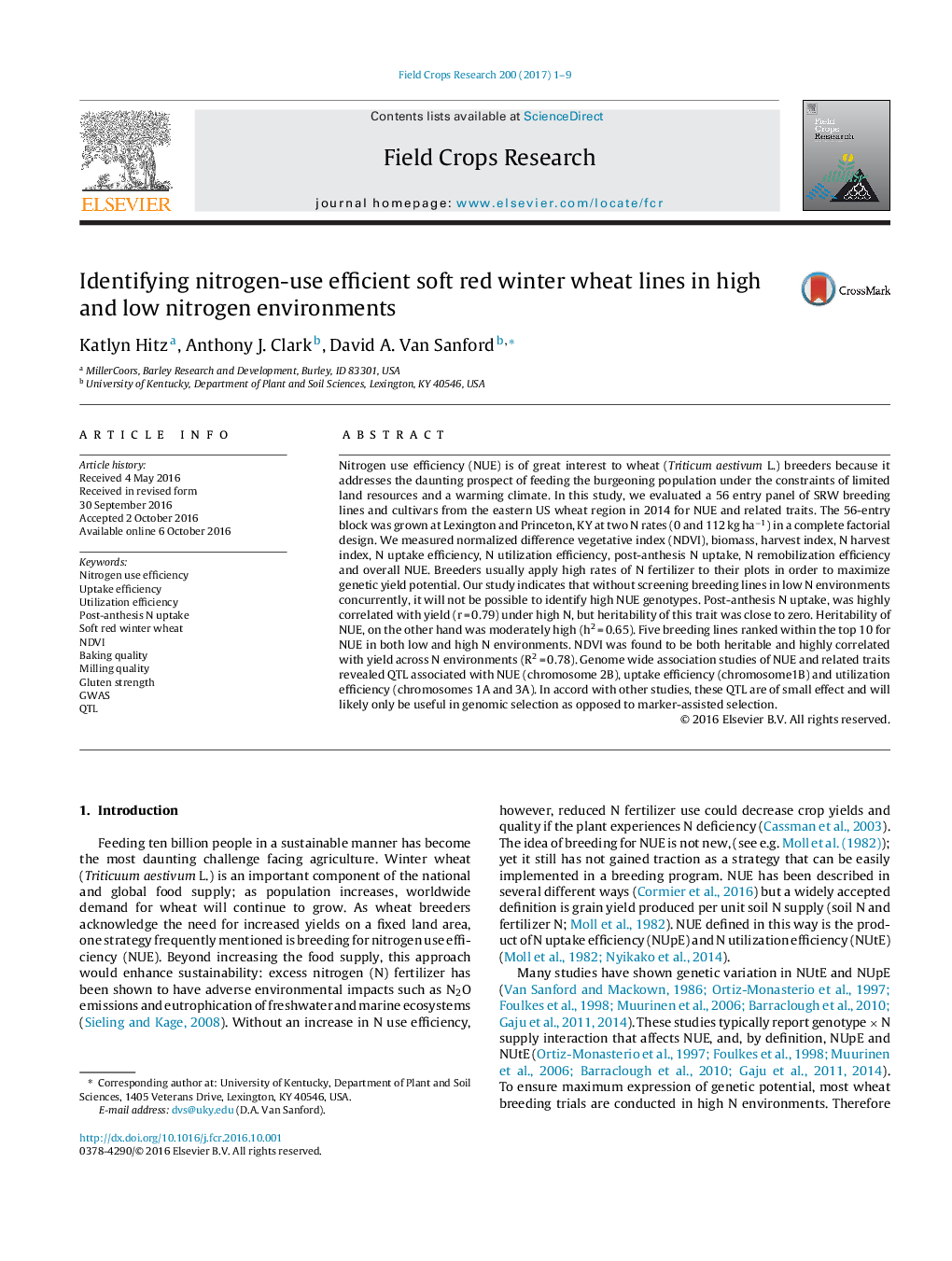| کد مقاله | کد نشریه | سال انتشار | مقاله انگلیسی | نسخه تمام متن |
|---|---|---|---|---|
| 4509800 | 1624663 | 2017 | 9 صفحه PDF | دانلود رایگان |
• N use efficient genotypes must be grown in low and high N environments.
• In high N environments, post anthesis N uptake is key in determining wheat yield.
• In low N environments, biomass N at maturity was a key determinant of wheat yield.
• QTL for NUE are better suited to genomic selection than marker assisted breeding.
Nitrogen use efficiency (NUE) is of great interest to wheat (Triticum aestivum L.) breeders because it addresses the daunting prospect of feeding the burgeoning population under the constraints of limited land resources and a warming climate. In this study, we evaluated a 56 entry panel of SRW breeding lines and cultivars from the eastern US wheat region in 2014 for NUE and related traits. The 56-entry block was grown at Lexington and Princeton, KY at two N rates (0 and 112 kg ha−1) in a complete factorial design. We measured normalized difference vegetative index (NDVI), biomass, harvest index, N harvest index, N uptake efficiency, N utilization efficiency, post-anthesis N uptake, N remobilization efficiency and overall NUE. Breeders usually apply high rates of N fertilizer to their plots in order to maximize genetic yield potential. Our study indicates that without screening breeding lines in low N environments concurrently, it will not be possible to identify high NUE genotypes. Post-anthesis N uptake, was highly correlated with yield (r = 0.79) under high N, but heritability of this trait was close to zero. Heritability of NUE, on the other hand was moderately high (h2 = 0.65). Five breeding lines ranked within the top 10 for NUE in both low and high N environments. NDVI was found to be both heritable and highly correlated with yield across N environments (R2 = 0.78). Genome wide association studies of NUE and related traits revealed QTL associated with NUE (chromosome 2B), uptake efficiency (chromosome1B) and utilization efficiency (chromosomes 1A and 3A). In accord with other studies, these QTL are of small effect and will likely only be useful in genomic selection as opposed to marker-assisted selection.
Journal: Field Crops Research - Volume 200, January 2017, Pages 1–9
